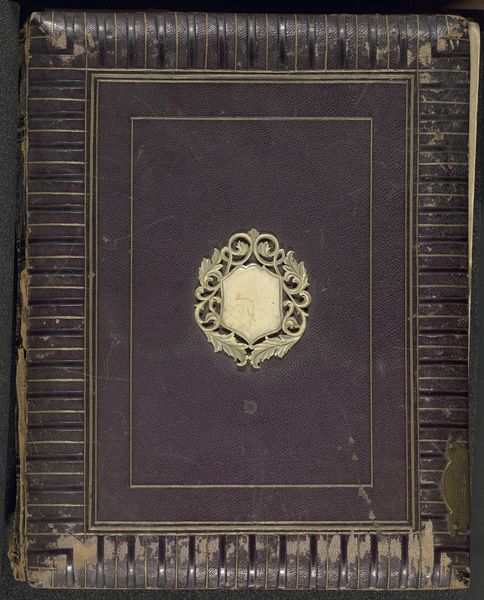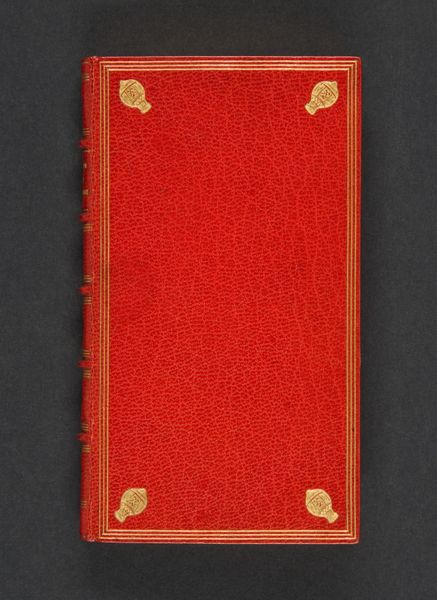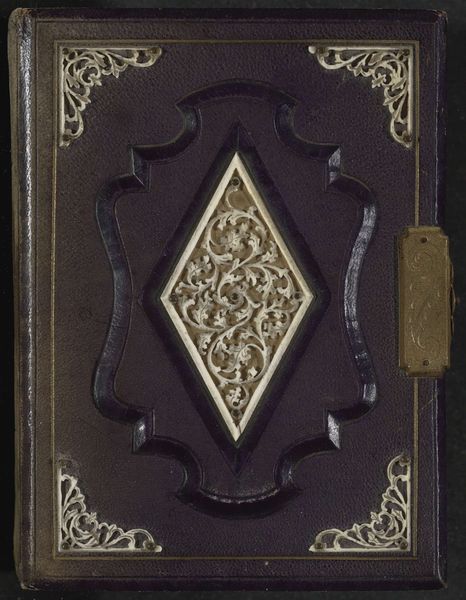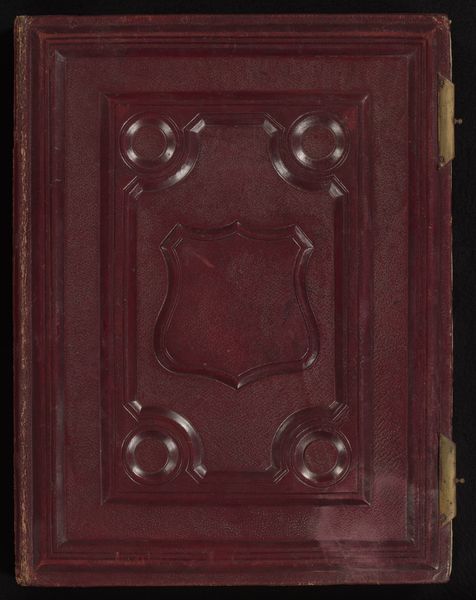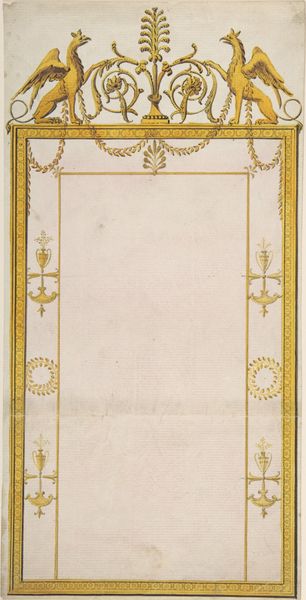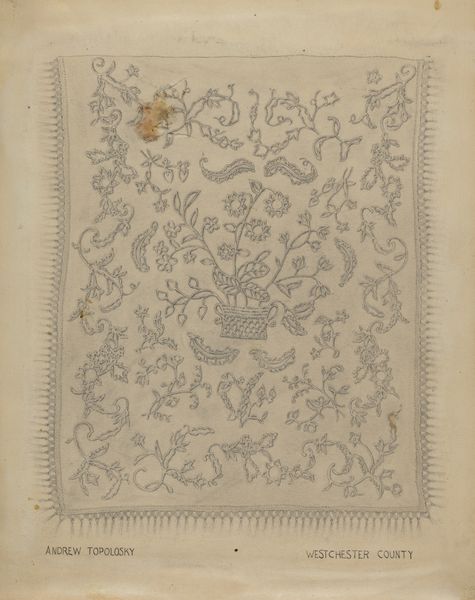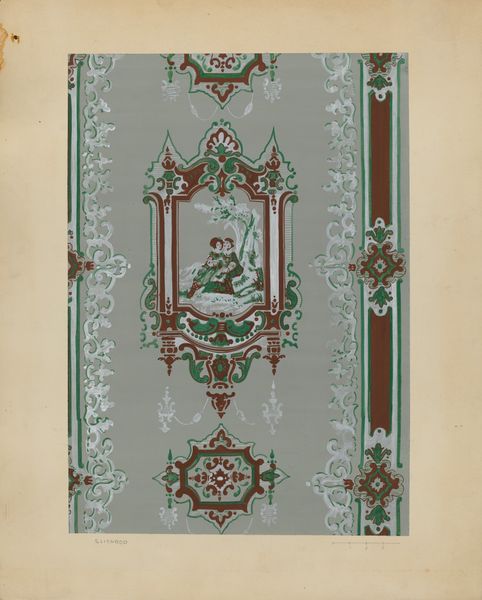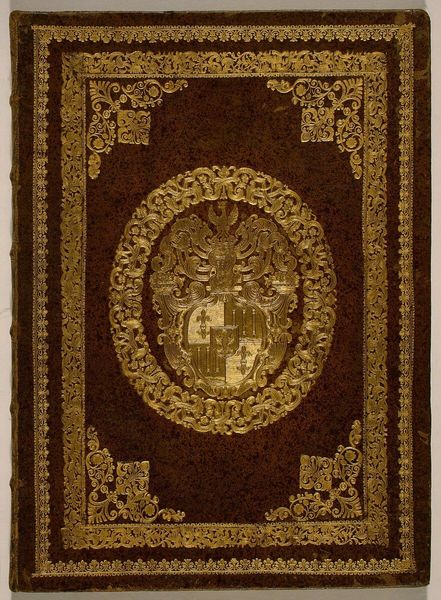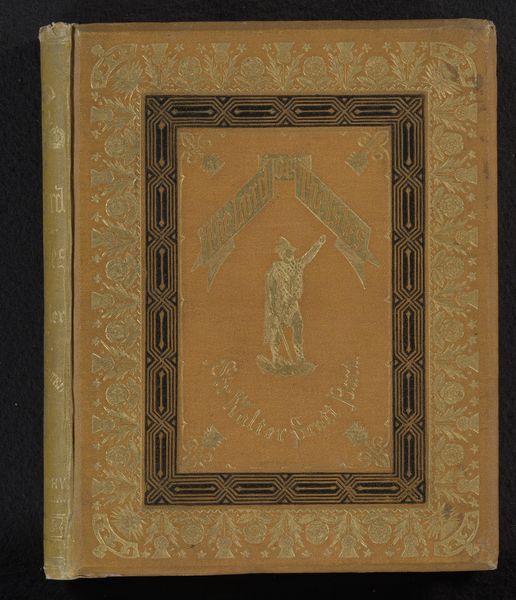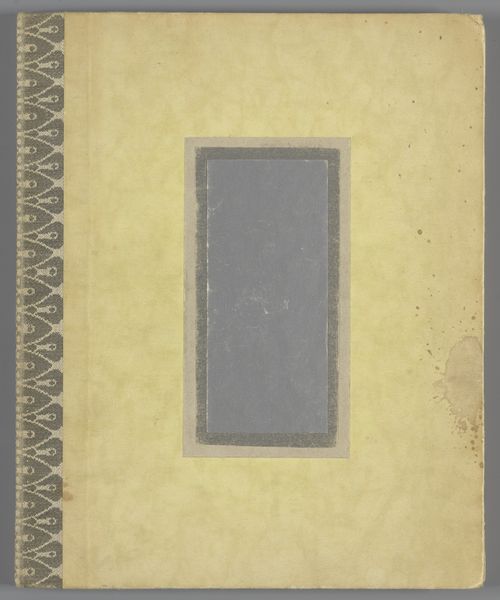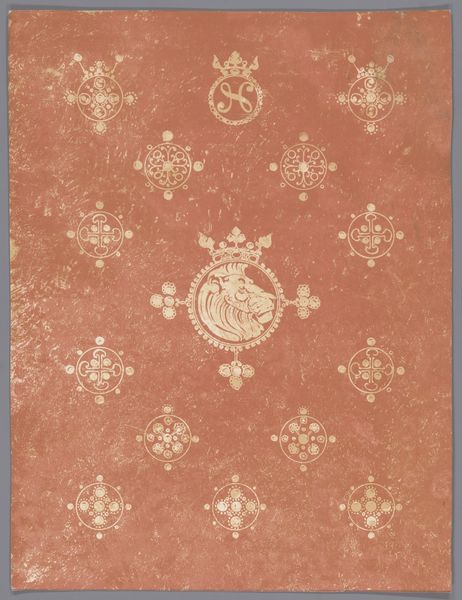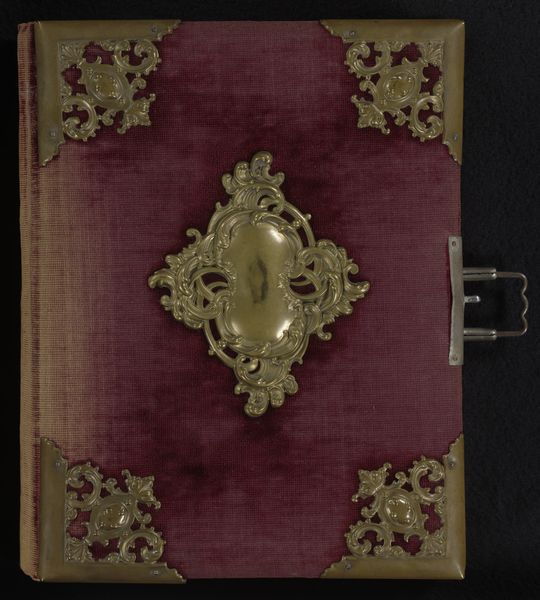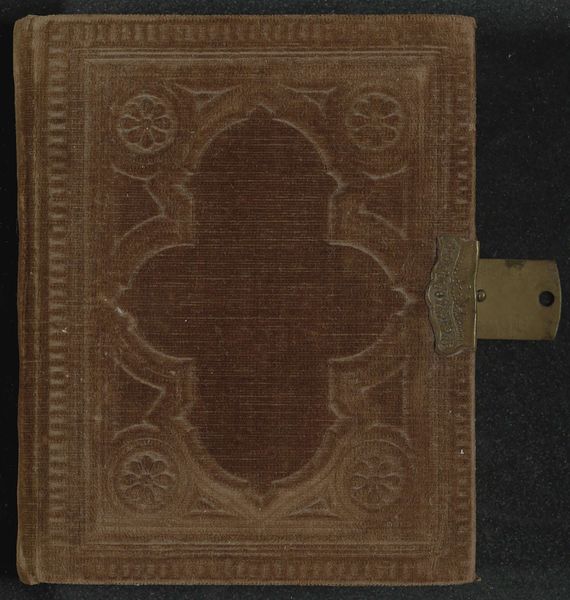
Fotoreproductie van een schilderij van Christus met het Heilig Hart en sikkel 1851 - 1900
0:00
0:00
print, photography
#
portrait
# print
#
photography
Dimensions: height 95 mm, width 46 mm
Copyright: Rijks Museum: Open Domain
Curator: I’m immediately struck by how intimate this piece feels, almost devotional in its design. The gentle hues of the cross-stitched textile against the monochromatic print of Christ—there's an ethereal quality to it all. Editor: Indeed. This is a photographic reproduction of a painting titled "Christ with the Sacred Heart and sickle," dating back to somewhere between 1851 and 1900. What is really remarkable here is the anonymous creator’s juxtaposition of the image with this hand-made mounting. It speaks volumes about how faith and social reform intertwined during that era. Curator: Absolutely, and the framing is particularly poignant. Cross-stitch inherently invokes traditions of home, family, and careful labor. It's almost like the image is cradled in a collective embrace, blurring the lines between the divine and domestic. Does this blend of religious and secular iconography hold specific meaning to you? Editor: I find myself reflecting on how visual symbols and the materiality of art serve as potent reminders of continuity, even across vast stretches of time. The Sacred Heart motif, of course, represents divine love and compassion—but including a sickle gestures toward revolutionary reform or at least, profound social change. So it asks, compassion for whom? For what? The use of cross-stitch also locates labor itself as something requiring reverence, complicating simplistic views about faith in society. Curator: I agree that there are multiple readings, but it strikes me that these might all be unified within an overall appeal for a society ordered under Christian ideals. After all, Christ himself taught that to truly love him meant advocating for the poor. That image of the bleeding, enflamed heart is an emotionally charged symbol in a way that more austere social or political programs might not have been. Editor: Certainly. What is striking, however, is the appropriation of agricultural imagery, especially in relationship to Christ’s hands. It feels akin to those socialist pamphlets that redeployed the image of Jesus to legitimize popular claims on the land, resources, and surplus wealth. And for that reason, the careful, homemade character of the cross-stitch seems more defiant to me than pious. Curator: It's a testament to art's capacity for layering meaning, and it really highlights that images hold such weight in memory and culture. This unique blend, where the divine and everyday converge, prompts us to rethink the familiar symbols in light of societal progress and our own understanding of art history. Editor: Yes, to consider not only the subject and presentation but also its purpose, and ultimately, who benefits from this artistic endeavor and interpretation.
Comments
No comments
Be the first to comment and join the conversation on the ultimate creative platform.
